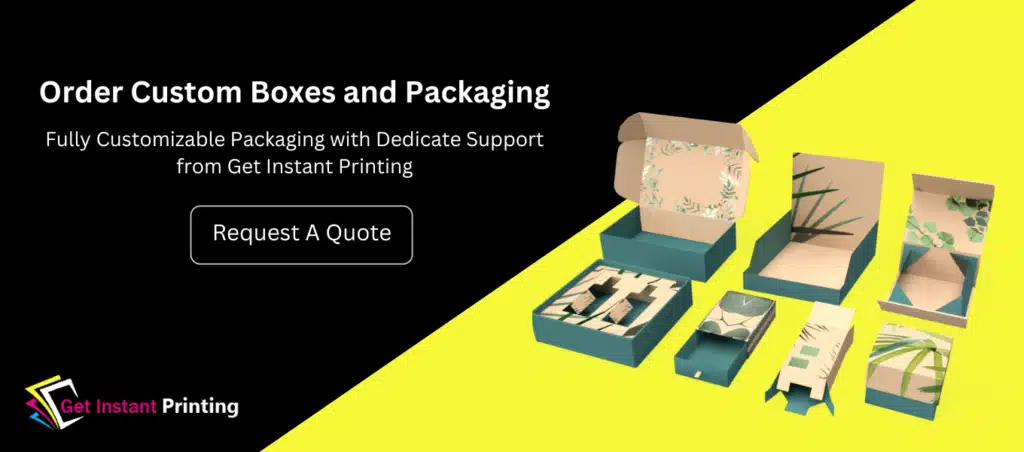Introduction to Box Dimensions
Box dimensions refer to a box or container’s length, width, and height. These dimensions are crucial in product packaging, storage, and shipping. Dimensions are also important in determining the amount of storage space for storage. The feasibility of transporting products through different modes of transportation.
Boxes come in various shapes and sizes and the dimensions of a box. We can customize it to meet the specific needs of the packaging product. It is essential to measure the dimensions of a box accurately to ensure that the products fit correctly. These are safe during transportation. Box module dimensions are usually in inches, millimeters, or centimeters, as length x width x height.
Dimensions are an essential aspect of packaging and shipping. Their proper measurement and management are crucial for ensuring the safety and cost-effectiveness of product transportation.
Boxes come in a variety of shapes and sizes, each designed for specific purposes. The following are the most common types of dimension boxes.
Corrugated boxes are of three layers of paper – an inner layer, a corrugated layer, and an outer layer. These boxes are sturdy, lightweight, and meet specific dimensions. We commonly use corrugated boxes for shipping and storing heavier items, providing excellent protection against impact and damage during transit.
We make cardboard boxes of thick paper which are similar to corrugated boxes. They are in use commonly for packaging lightweight products and storage purposes.
Plastic boxes are durable, resistant to moisture, and easily cleaned. We use it for shipping food items, as they are airtight. And can keep food fresh for a more extended period.
Wooden boxes are sturdy and durable and are best for shipping heavy and fragile items, such as machinery and electronics. Wooden boxes provide excellent protection against impact and can meet specific dimensions.
The type of box selected for packaging and shipping will depend on the size and weight of the products. The level of protection required during transit.
Importance of Box Dimensions in Packaging and Shipping
Dimensions of the boxes are essential in the Custom Packaging and shipping of products. The box size affects the cost of shipping and storage and the safety of the products. Proper measurement and management of box dimensions are essential for confirming the successful transportation of products.
Accurate box extent is significant in determining the amount of space for storage and the feasibility. And the transporting of products through various modes of transportation.
By selecting the appropriate breadth and customizing them to fulfill specific requirements. The businesses can minimize waste, reduce shipping costs, and provide the safety of the products.
Factors Affecting Dimensions
Acreage is affected by various factors, including the products’ size and shape and transportation method. And the level of protection during transit. Understanding these factors and how they impact is vital for ensuring the successful transport of products.
The size and shape of the products are the primary factors affecting box dimensions. Boxes must be large enough to accommodate the products. It provides adequate protection but not so large that they become cumbersome to handle or waste valuable storage space.
The method of transportation is another factor that affects size. Boxes used for air transportation must be able to fit into the cargo holds of airplanes. The boxes used for ground transportation must fit into trucks and trailers. The dimensions of boxes used for sea transportation must consider the size of shipping containers and the availability of space on cargo ships.
The level of protection required during transit is another crucial factor affecting box volume. Boxes for shipping fragile products, such as glassware or electronics. We must design to protect against impact and other potential damage during transit. On the other hand, boxes used for shipping heavy products, such as machinery or equipment, must be designed to withstand the weight of the products and provide adequate support during transit.
Measuring and Calculating Box Dimensions
Measuring and calculating packaging dimensions is essential for packaging and shipping products. Accurate packaging box proportions ensure the products are safe during transit, the shipping process is cost-effective, and the storage requirements are present. There are several steps involved in measuring and calculating box height and width.
The first step is to determine the size and shape of the products. This information is to select the minimum size of the box required to accommodate the products and provide adequate protection. The size and shape of the custom packaging products can be measured using a tape measure, a ruler, or a digital scale.
The next step is determining the cushioning required to protect the products during transit.
Once the size and shape of the products and the amount of cushioning have been determined, the dimensions can be calculated. It involves specifying the box’s length, width, and height and ensuring that it fulfills the specific prerequisites of the products and the method of transportation.
Standard Box And Dimensions in the Industry
Standard boxes’ dimensions are used in various industries for packaging and shipping products. Businesses can benefit from reduced costs, improved efficiency, and simplified logistics using standard dimensions.
The industry’s most commonly used standard box dimensions are those used for shipping boxes, such as those used by shipping companies like FedEx and UPS. These standard dimensions are designed to meet the requirements of different types of products, from small envelopes to large boxes, anD are efficient and cost-effective shipping.
Another example of standard box averages in the industry is those used in packaging consumer goods, such as food, clothing, and electronics. These boxes meet specific requirements for retail and distribution, such as product protection, stackability, and product presentation.
In the food industry, standard box volumes are used for packaging and transporting perishable goods, such as fruits, vegetables, and dairy products. These boxes are here to meet specific requirements, such as temperature control, air circulation, and product preservation, and for food safety and freshness.
Common Package Sizes:
Here are some of the most common package sizes that people often choose from when shipping an order:
- Mailing box size 4 x 4 x 2”
- Mailing box size 6 x 6 x 2”
- Box Mailing size 8 x 5 x 3”
- Mailing box size 8 x 6 x 4”
- Mailing box size 9 x 8 x 3”
- Box Mailing size 10 x 9 x 4”
- Mailing box size 14 x 10 x 4”
- Shipping box size 6 x 6 x 6”
- Shipping box size 8 x 8 x 8”
- Box for shipping size 10 x 10 x 8”
- Shipping box size 12 x 12 x 6”
- Shipping box size 12 x 12 x 10”
- Box for shipping size 14 x 14 x 12”
- Shipping box size 16 x 14 x 14”
- Shipping box size 20 x 18 x 12”
These are not mere options. There are thousands of options with varying dimensions for you to prefer.
Considerations for Selecting Appropriate Dimensions
When selecting the correct aspect, several important considerations must be considered. These considerations include product size, shape, weight, shipping method, and storage requirements.
The first consideration when selecting a facet is the size and shape of the product. The box must be able to adjust the product, providing adequate space and protection to prevent damage during transit. It means that the product must fit snugly within the box and should not be able to move around freely.
Another important consideration is the weight of the product. The box must support the product’s weight without collapsing or becoming damaged during transit. This means the package must have solid and stable materials and sufficient reinforcement to guarantee stability and protection.
The shipping method used is also a critical consideration when selecting box dimensions. The box must be the suitable size and shape for the transportation procedure boxes used for air transportation must be competent to fit into the cargo holds of airplanes.
Impact on Shipping Cost
The dimensions of a box can have a significant impact on shipping costs. Shipping companies often base their pricing on the size and weight of a package, so selecting the appropriate height and width can help to reduce shipping costs. However, balancing the need to reduce shipping costs with protecting the products during transit is vital.
The footage can impact shipping costs by affecting the weight of the package. If a box is too large for the products, it can increase shipping costs due to the added weight of the extra room in the box. On the other hand, if the package is too small for the products, it may damage them during transit, requiring additional shipping costs for replacement or repair.
Techniques for Optimizing to Reduce Waste
Optimizing boxes can be critical in reducing packaging and shipping waste. By reducing the size of the box, businesses can reduce the number of materials used, leading to a reduction in waste and a more sustainable approach to packaging and shipping.
One technique for optimizing is using dimensioning equipment, such as a box sizer or scale, to accurately measure the packaged products’ size. This information can help select a box appropriate for the products, reducing the amount of excess space in the box and the number of materials used.














